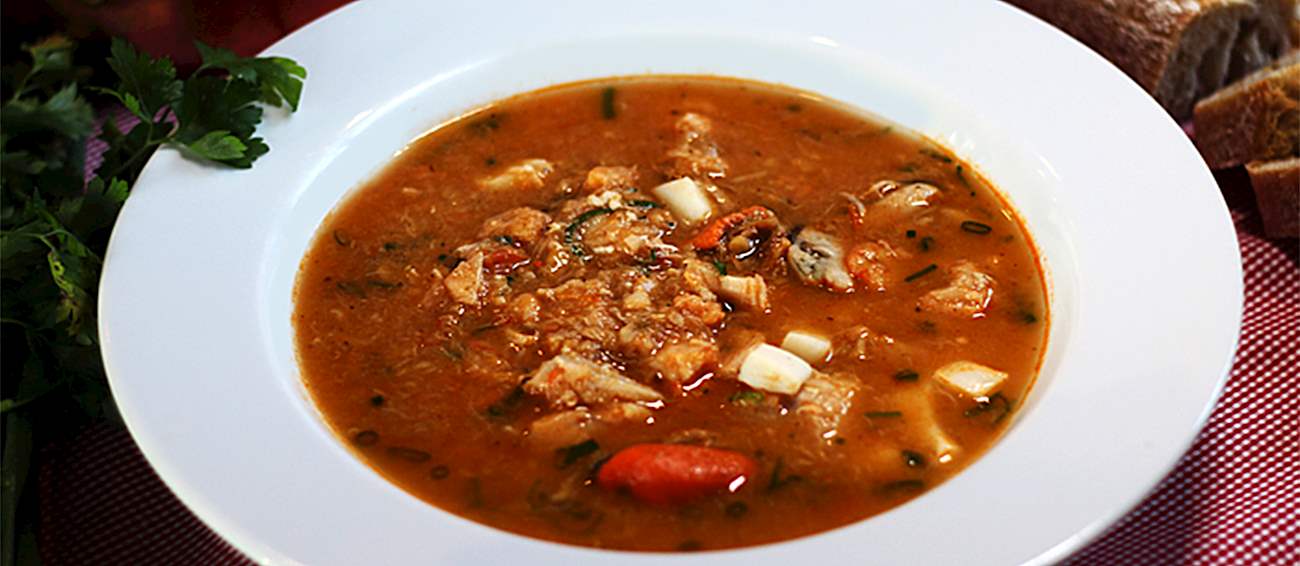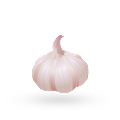MAIN INGREDIENTS
Tacacá is a mouth-numbing Brazilian soup made with large dried shrimps, tucupí (wild cassava byproduct), manioc starch, hot yellow peppers, and jambú – a leafy plant with anesthetic properties. To make tucupí, the juice extracted from a specific variety of sour cassava called mandioca brava (lit. angry cassava) is boiled, then left to ferment to eliminate the high levels of cyanide it possesses in its raw form.
After the fermentation process is over, the resulting sauce is distinguished by a yellowish color and an intensely acidic flavor. The mouth-numbing sensation of the soup comes from the jambú plant, which apart from being used in cooking, has also had a long tradition as a folk remedy in northern Brazil, especially in the states of Pará and Amazonas.
This seafood soup was named after Leão Veloso, a Brazilian diplomat who developed a taste for bouillabaisse during his service in France. Upon returning to Brazil, he tweaked the recipe for the famous French classic, most likely due to unavailability of some ingredients.
His dish soon became a favorite all along the coast, especially in Rio de Janeiro, where there are now bars that specialize in this rich and spicy soup which is typically made with whole grouper and various shellfish.
Quibebe is a hearty and Brazilian soup or stew made from winter squash and onions. It has a very thick texture and is traditionally served before a larger entrée or the main meal. The dish is somewhat similar to curry due to the usage of chili paste, ground ginger, and coconut milk.
It is recommended to garnish quibebe with fresh parsley.
MAIN INGREDIENTS
Caldo de piranha is a traditional soup prepared with piranha fish as the key ingredient. The dish is a specialty of the Pantanal area in Mato Grosso do Sul. Other ingredients that are commonly used to prepare the soup include onions, tomatoes, annatto, chili peppers, and a combination of coriander, parsley, and spring onions.
There are also variations with added garlic, lime juice, vinegar, and vegetables such as bell peppers. The piranha, a small bony fish without much meat is cleaned and boiled, then blended for the piranha stock, which is sieved to remove the bones.
The onions are sautéed in oil with tomatoes, annatto, herbs, chili, and piranha stock, and the combination is simmered shortly before the soup is served.
MAIN INGREDIENTS
Despite its name, which translates to rooster’s head, cabeça de galo doesn’t contain any meat. It is a nourishing soup with a thick texture, made with a combination of manioc flour, eggs, water, and vegetables such as onions, garlic, tomatoes, and bell peppers.
This delicacy is typically seasoned with salt, pepper, and annatto, while coriander is used as a garnish after the soup has been cooked. In Brazil, it is well known as a great hangover cure, so it is often consumed after a night of heavy drinking.
TasteAtlas food rankings are based on the ratings of the TasteAtlas audience, with a series of mechanisms that recognize real users and that ignore bot, nationalist or local patriotic ratings, and give additional value to the ratings of users that the system recognizes as knowledgeable. TasteAtlas Rankings should not be seen as the final global conclusion about food. Their purpose is to promote excellent local foods, instill pride in traditional dishes, and arouse curiosity about dishes you haven’t tried.









